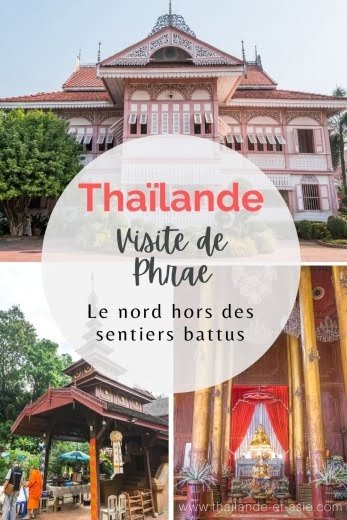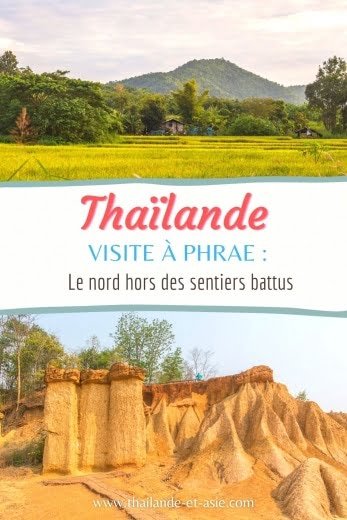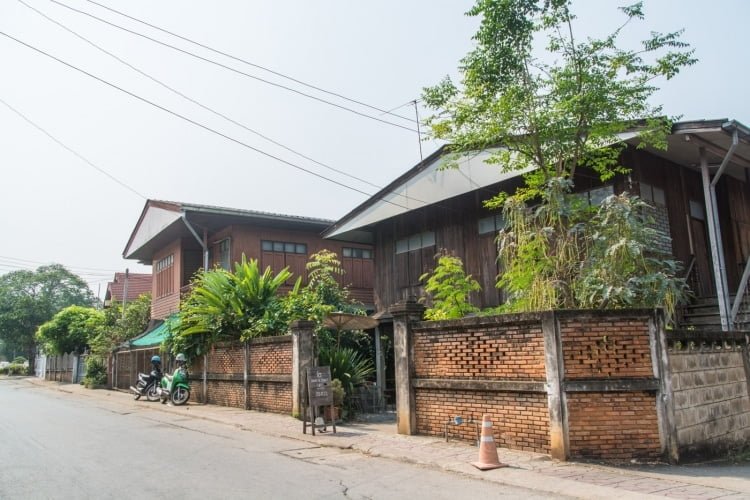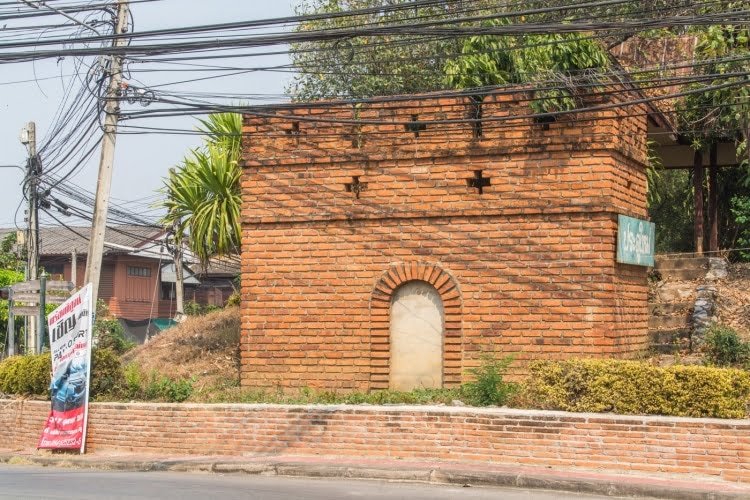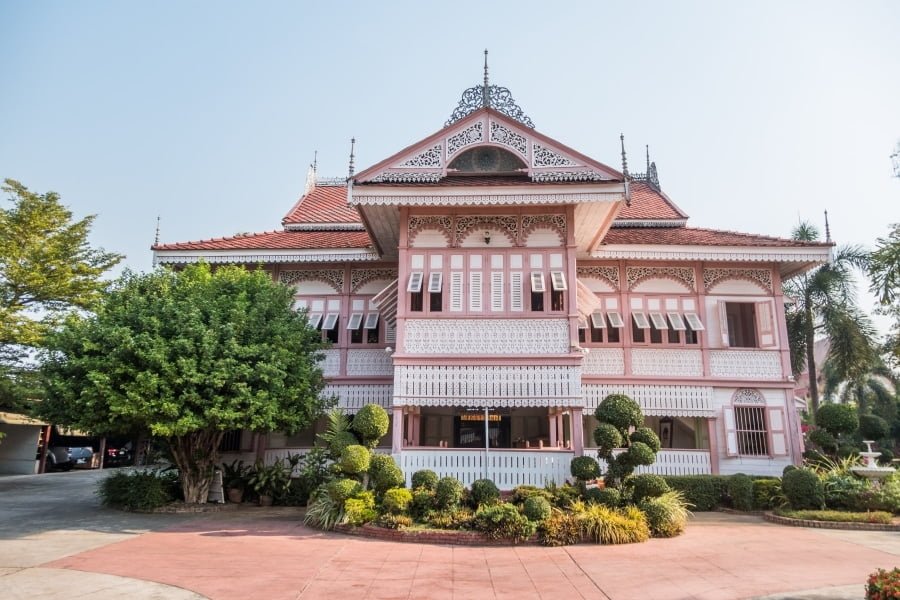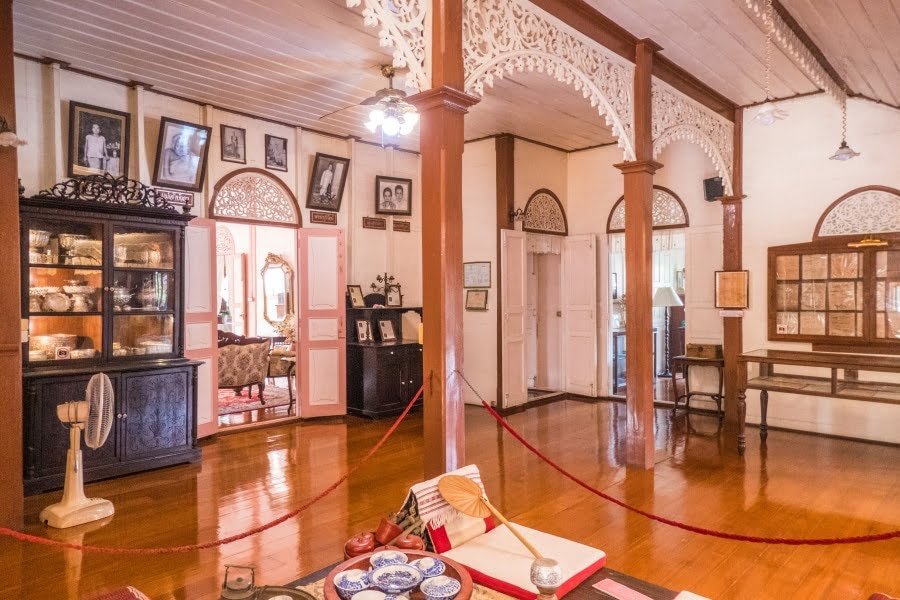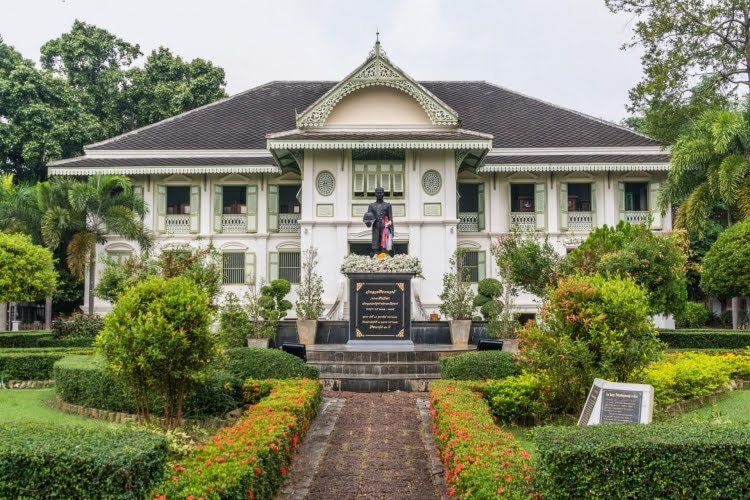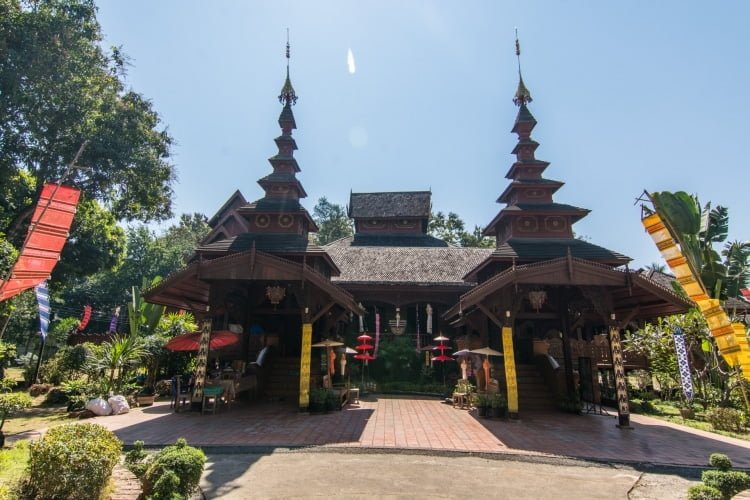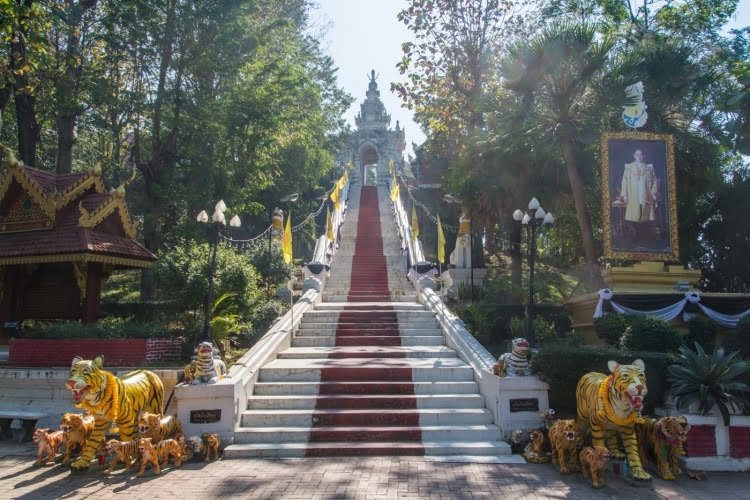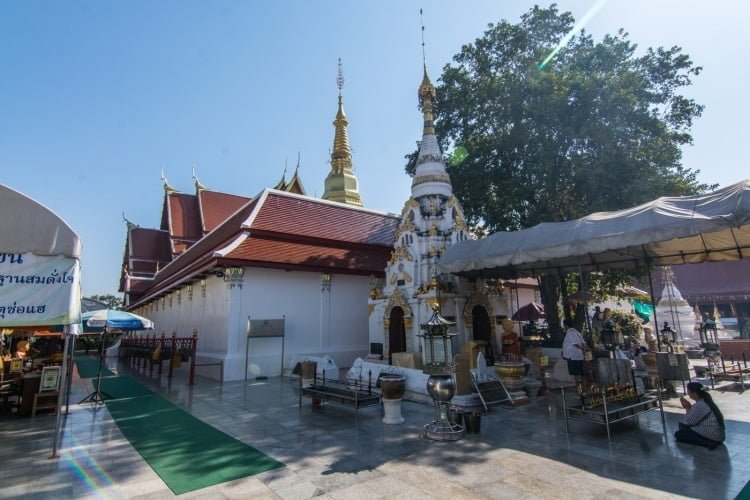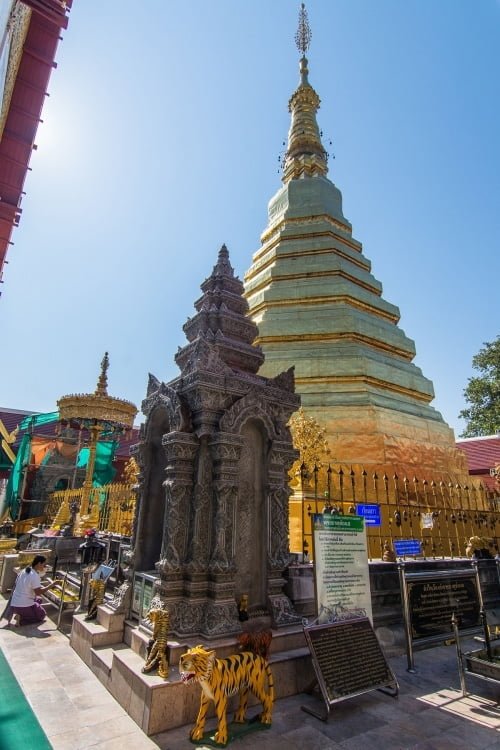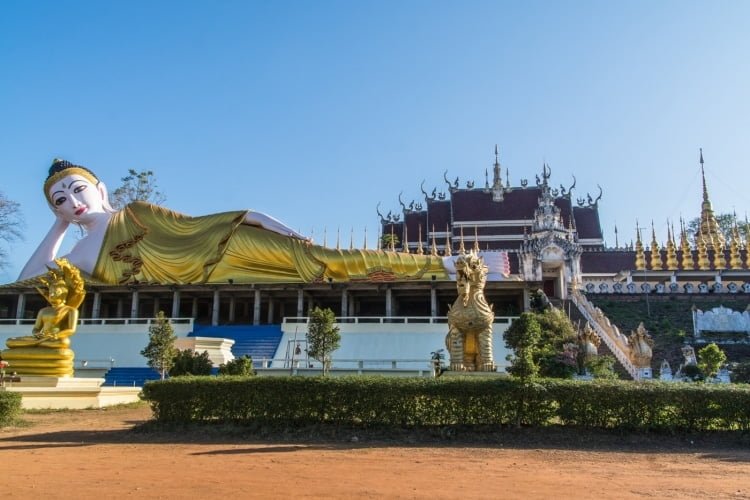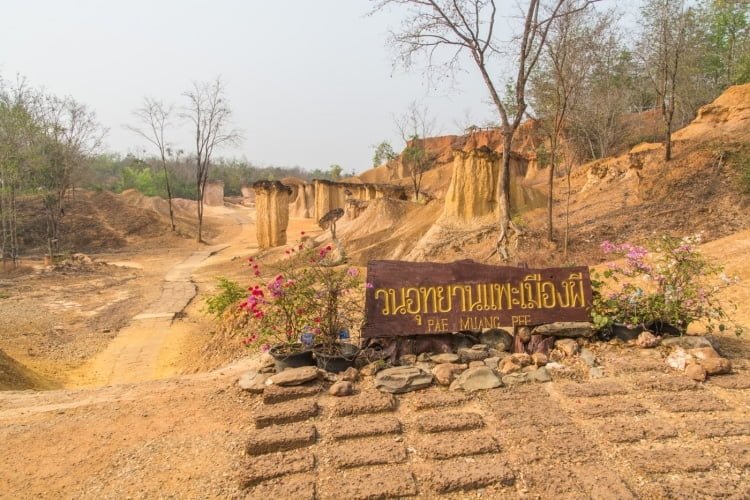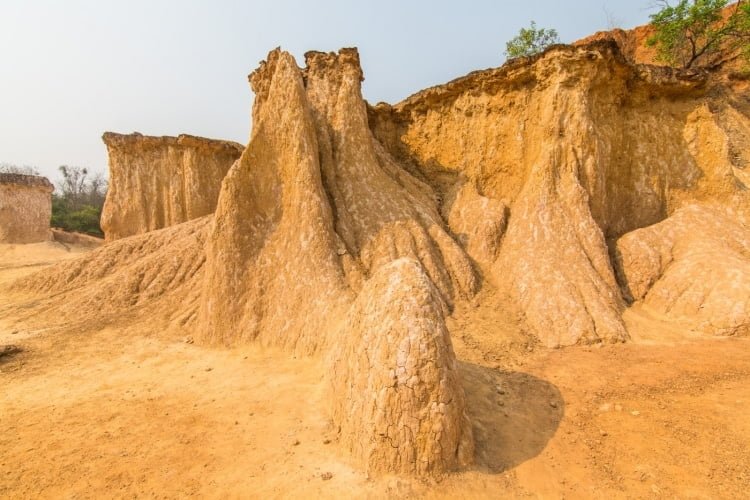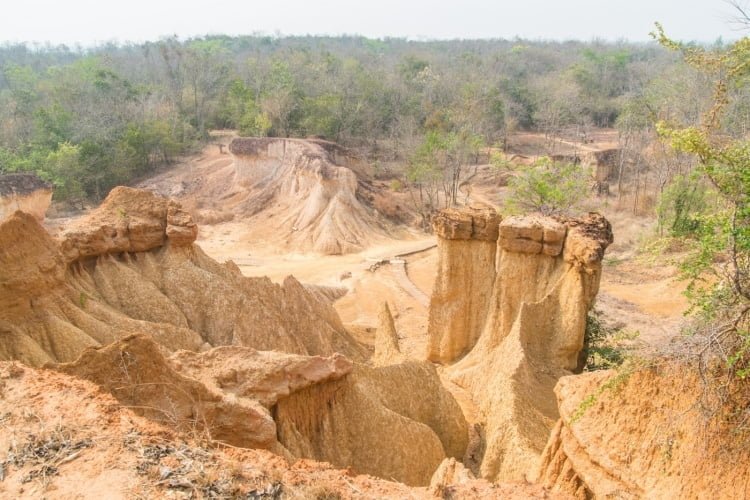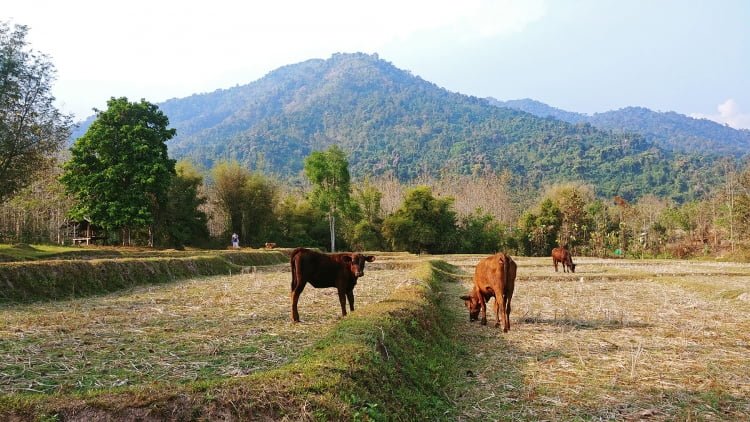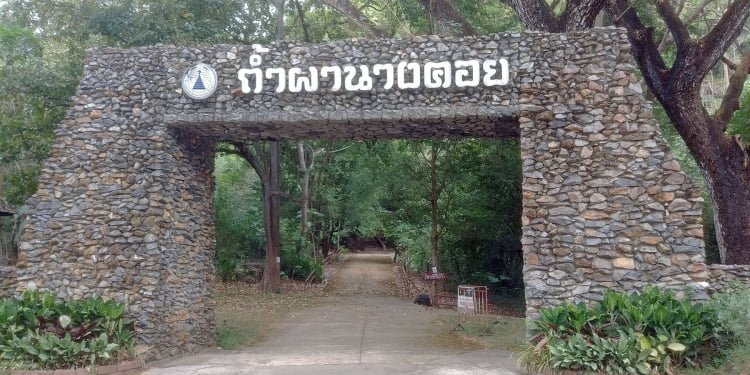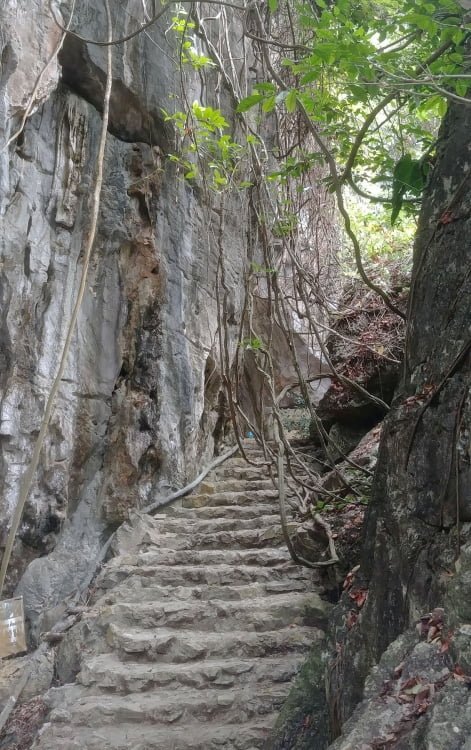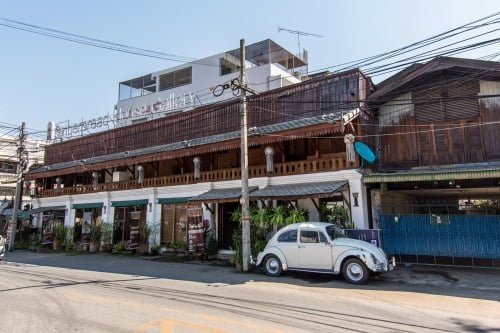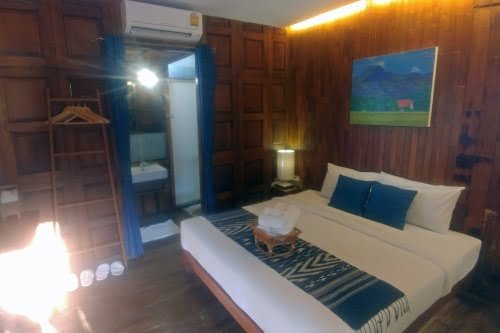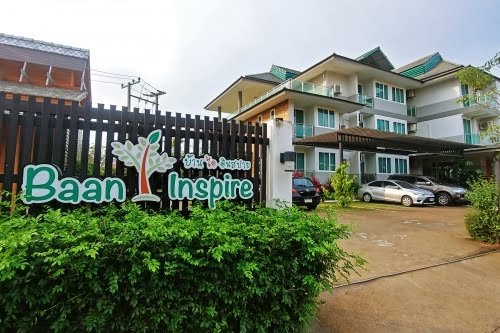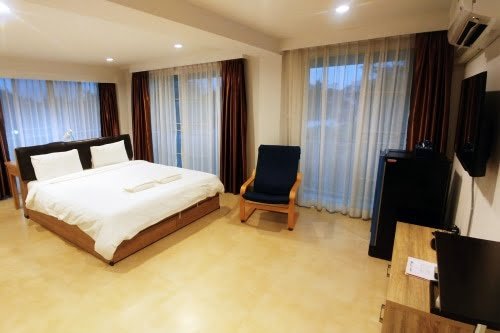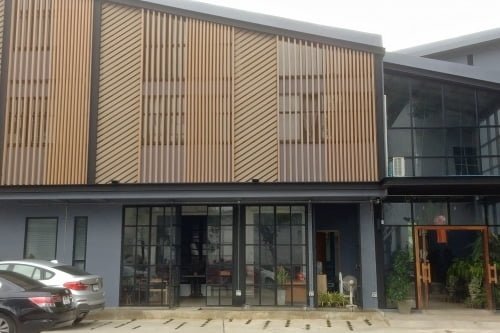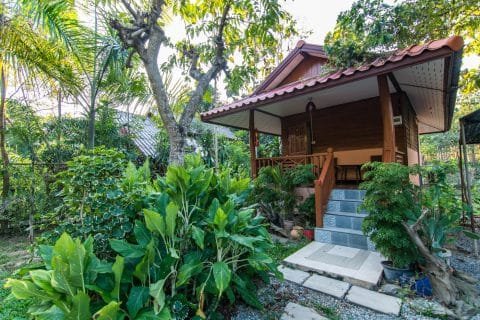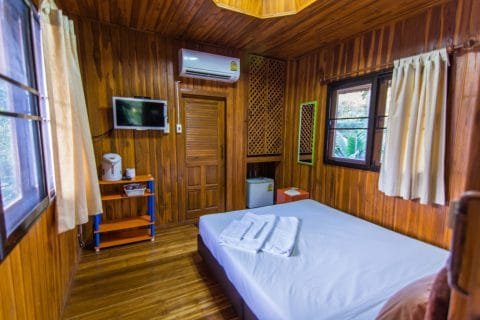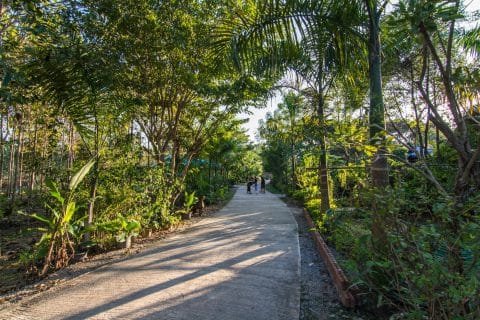
Phrae: An Off-the-Beaten-Path Tour in Northern Thailand
Phrae, which is pronounced “prê”, is a small town and province in the north of Thailand. Stage ideal on the road to Chiang Rai is a little-known city and rarely visited by foreign tourists.
However, and as is often the case, when we are interested in seeing beyond the classic visits, Phrae has some assets and an undeniable charm with its many wooden houses. Hopefully this overview gives you an idea of the possibilities to spark your curiosity and take a look at this “authentic” Thailand.
The charm of the old town
This might not be obvious to you at first, unless you already know a little about Thailand. Phrae, and this is undeniable for me, gives off a certain aura, a charm and a tranquility, closer to a village than a town (admittedly, a small one since less than 20 inhabitants).
A century ago, logging (of teak wood) was Phrae's economic mainstay. Today, its legacy still has a strong presence in the city's culture and architecture.
Phrae's "Gingerbread" Style
As I detail below, several significant houses are not only still standing, but can be visited. Of course, we are talking about a story that is not so old, at most a hundred years old, but let us not forget to what extent these wooden buildings are unfortunately becoming increasingly rare in Thailand.
And apart from in the Lampang old town (located 100km away), I have rarely found this atmosphere. In total, there are no less than 100 teak houses in the city, whose construction dates from 1890 to 1920.
Some are in a particular style called "gingerbread", a colonial invention of the late 19th century that is said to have originated in the mansions built by the French in Haiti. Its elaborate, flamboyant features and use of bright colors are said to be similar to the model houses once made by children out of gingerbread dough (yes, just like in the fairy tale Hansel and Gretel).
Apart from the wooden houses, we also find the old wall, surrounding the old town and accompanied by a canal. Although it may not seem like much, this old wall, now quite covered in brushwood, is still almost 1200 years old!
A good way to explore the old town is to rent a bike for the day (available at Be Bike).
Ban Chao Nan Chaiwong
We start with the fastest, Ban Chao Nan Chaiwong. There is not much information to tell you about this magnificent 2-story residence, except that it dates from 1907. But we notice its careful architecture, with its numerous wooden sculptures, mainly floral motifs, which adorn the balcony and the underside of the roof.
La The house is still inhabited, so as such, there are no opening hours or entry fees to pay since the gate will be closed as standard. However, it is possible to visit with the owner if by chance he is in the area. If not, you can always walk past and take a look.
Wichai Ratcha residence
House of the former treasurer and head of the province of Phrae, Phra Wichai Streak, this mansion made of teak wood is a jewel in suspense. Dating from 1880, it was the scene of a tormented history.
DFirst in 1902, during the period of the so-called rebellion of Ngiao, an ethnic group originating from Shan State (in what is now Burma, but under British control at the time).
Indeed, in order to fight against the oppressive stranglehold of foreign powers (the British on one side, the French on the other having taken back from Siam the vassal states of what today forms Laos, Cambodia, part of Burma, and even Malaysia), Bangkok required local leaders to pay higher taxes and hand over much of their power to officials in the capital. This raised local authorities against Bangkok as it was a constraint on their business.
baan Wichai Streak then served as a hiding place for certain officials wanted by the rebels. Later, it was during the Second World War that the house was used, this time as a weapons cache and meeting place for the Free Thai Movement. This is Wichai's own son Streak, became a member of parliament (after the fall of the absolute monarchy in 1932) who was the leader of this movement Phrae, an equivalent of the resistance in France, fighting here against the Japanese invaders (to learn more about the Free Thai Movement, there is a museum dedicated to Phrae).
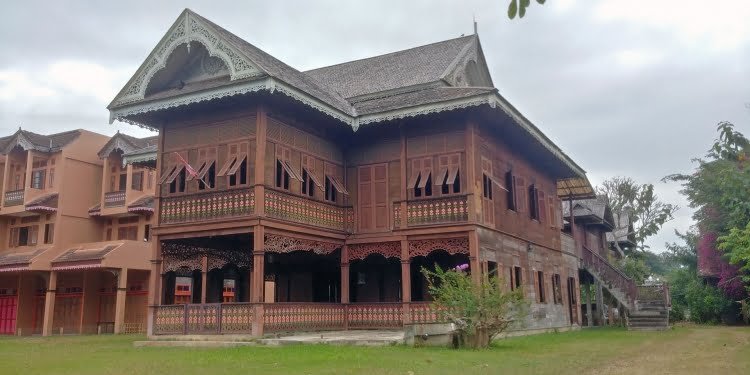 Abandoned thereafter, it was not until 1992 that a Vietnam War veteran, Veera Star falls in love with this ruin and decides to preserve it at all costs. With these savings, he bought the house and began to renovate it. Unfortunately, he was caught short by the cost of such a huge task and spent all his resources on it, from the houses he had accumulated in his life to the land he owned.
Abandoned thereafter, it was not until 1992 that a Vietnam War veteran, Veera Star falls in love with this ruin and decides to preserve it at all costs. With these savings, he bought the house and began to renovate it. Unfortunately, he was caught short by the cost of such a huge task and spent all his resources on it, from the houses he had accumulated in his life to the land he owned.
Today, the bank took it back with a mortgage of 10 million Baht. Mr Verra never gave up and turned to various state bodies such as the Ministry of Finance, the Department of Fine Arts and others. Although he welcomed these efforts to preserve this heritage, since the mid-2000s he has received only empty promises and remains today in fear that the house will be sold to someone unaware of its historical importance.
A long presentation, but for me who is curious of history in general, I find it important to explain what this building represents. It is also a way to point out the recurring problem in Thailand regarding the preservation of old buildings like this one.
Khum Vongburi Museum
Khum Vongburi Museum is a magnificent two-storey teak mansion built in the late 19th/early 20th century and now open to the public as a museum. It was the home of Luang Phongphibun and his wife Chao Nantha. Phongphibun was a nobleman who made his fortune in the teak timber trade when his wife was a member of the Phrae royal family.
This beautifully preserved residence, set in manicured gardens, is a classic example of turn-of-the-century Northern Thai style. The architecture is not classical Thai, but shows European influences. (notably French, British, Dutch, due to the companies heavily involved in teak exploitation in northern Thailand during this period).
The two-story, tiled, high-ceilinged, large-balcony style is somewhat reminiscent of colonial buildings seen in Burma, but the intricate wood carving on the gables and balustrades is very much in keeping with the traditional style. Lanna. It is actually a Thai version of the style “ gingerbread » mentioned in intro.
If I give you examples of temples to see below, I will point out this one here since it is nearby. You can indeed take a look at the nearby temple, the What Phong The name.
Looking You will then be taken aback by its giant statue of a turtle topped with a small Buddha, next to it is a white structure topped with multiple chedis with golden umbrellas, typical of the Burmese style. Also in the courtyard you will see a golden statue of a reclining Buddha.
Khum Chao Luang
Khum Chao Luang is the former residence of Prince Piriyatheppawong, the last ruler of Phrae. Indeed, the city of Phrae, which traces its origins back to the ancient Mon Kingdom of Haripunchai (now Lamphun), and despite being at various times dependent on the more powerful kingdoms of Phayao, Nan and Lanna (Chiang Mai), has always maintained its own royal family lineage and, for some periods, a semblance of independence.
Built in 1892 during the reign of Rama V, the house embodies the perfect blend of European and Thai styles, and is impeccably preserved with delicate carvings on the balconies, verandas and roof gables inspired by traditional Thai sculpture. Unusually, entry is free for all visitors.
Inside are exhibited period objects, paintings and the rooms seem frozen in time. The last Lord having fled the palace during the Ngiao rebellion in 1902 (to join Luang Prabang, then under French domination). A special fact, there is even a small local prison in the basement.
It was in this building that King Bhumibol (Rama IX) and his wife Queen Sirikit stayed during an official visit to Phrae in 1958.
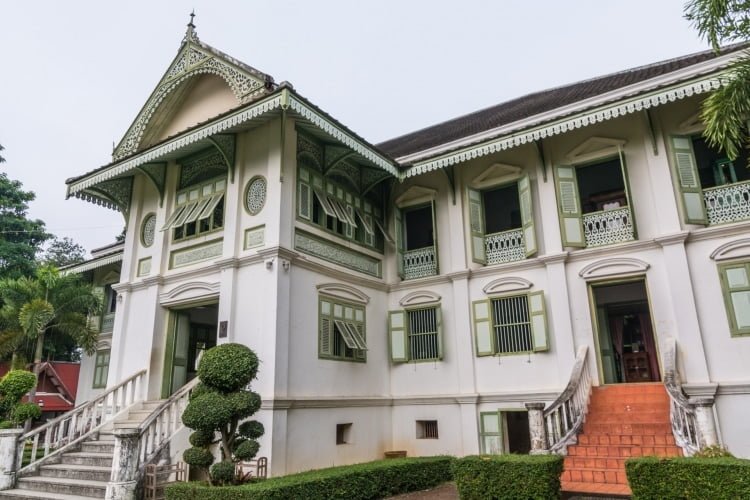
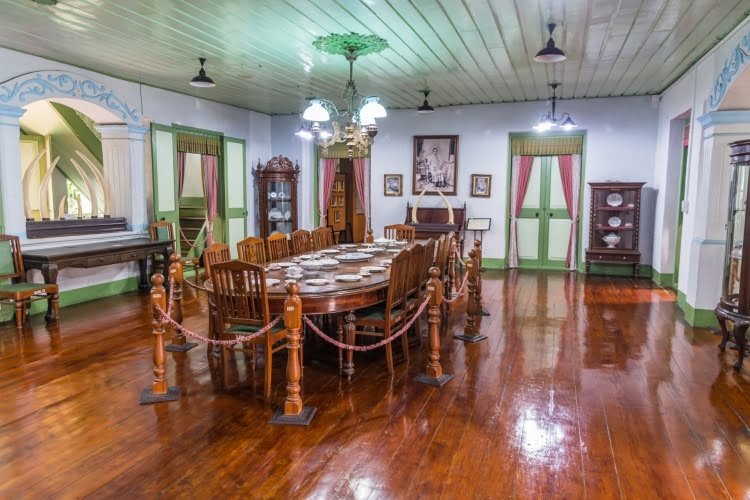
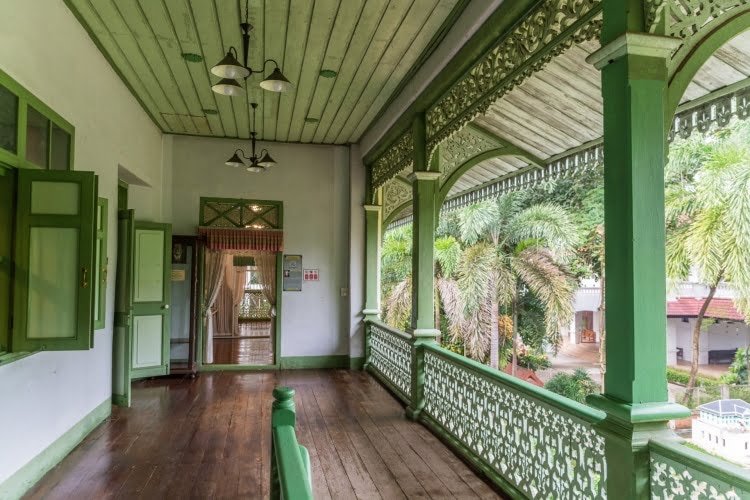
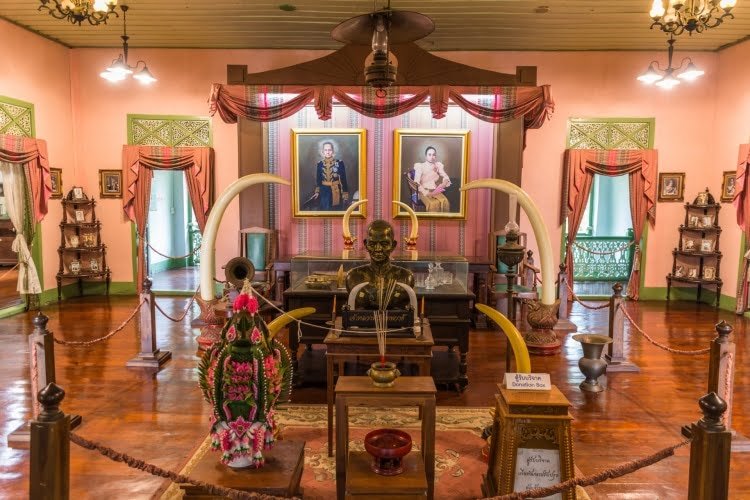
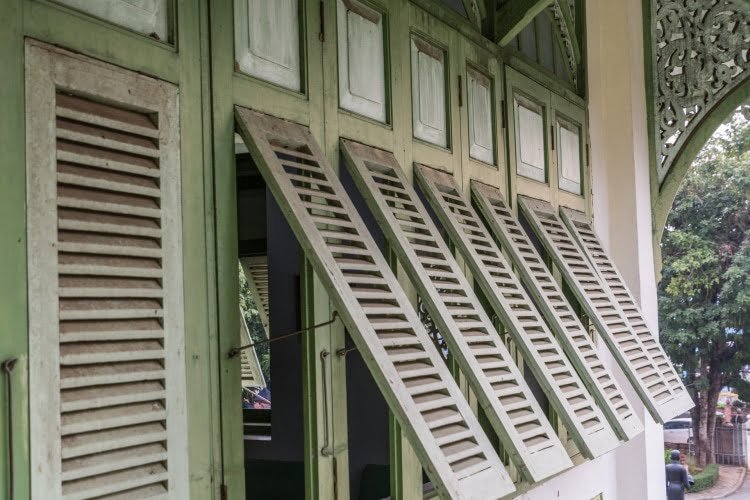
Some interesting temples around Phrae
Like anywhere in Thailand, and if you are not yet satisfied level temples, Phrae has its share of Wat (temple), worth at least a glance.
Wat Chom Sawan
For me, my favorite in Phrae. Already because this one, in the logic of what developed the city, is a teak temple built on several levels between 1910 and 1912. Wat Chom Sawan is of Burmese architectural style. And for good reason, the temple is the work of a rich merchant from the Shan state, in Myanmar.
The temple was built by Shan labourers, many of whom migrated to the region as loggers on the timber plantations (under the supervision of British merchants). It is notable for the decorative use of tin stenciling on the ceilings and interior columns.
Wat Chom Sawan is often quiet, sometimes inside, a small lady weaves with a wooden machine. She makes rolls of orange fabric, used either for the monks' robes or to surround the brick chedi located on the side in front of the temple. The decoration is typical of the north and personally, I was quite captivated by its high ceiling richly decorated with red and gold ornaments.
Also note that between the temple and the road is find a small amulet market.
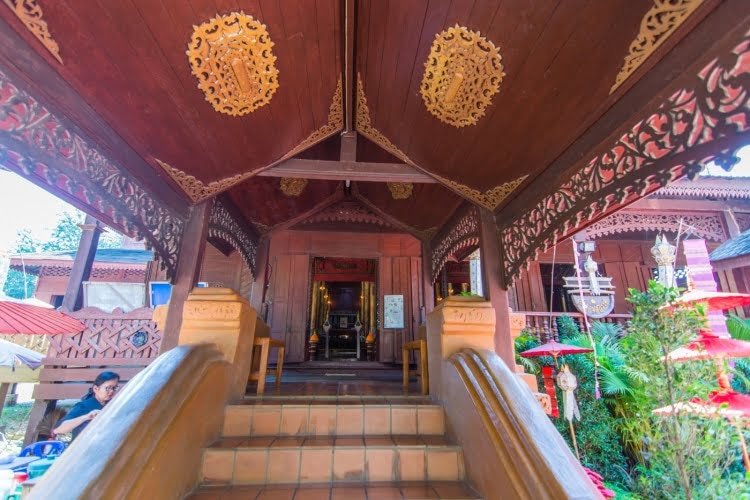

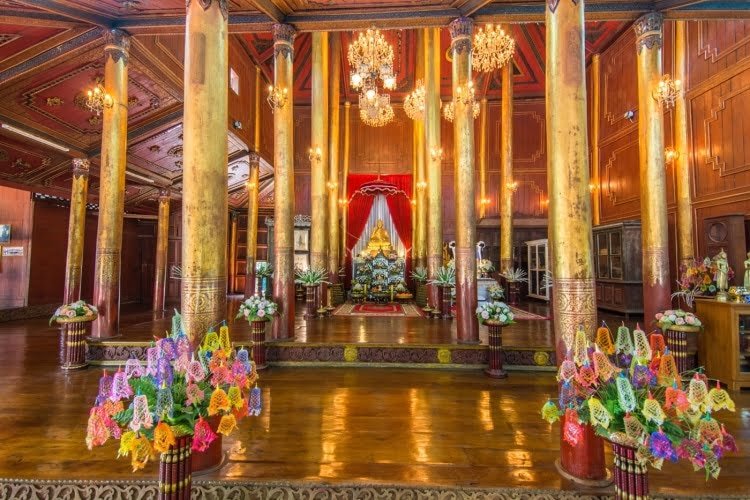
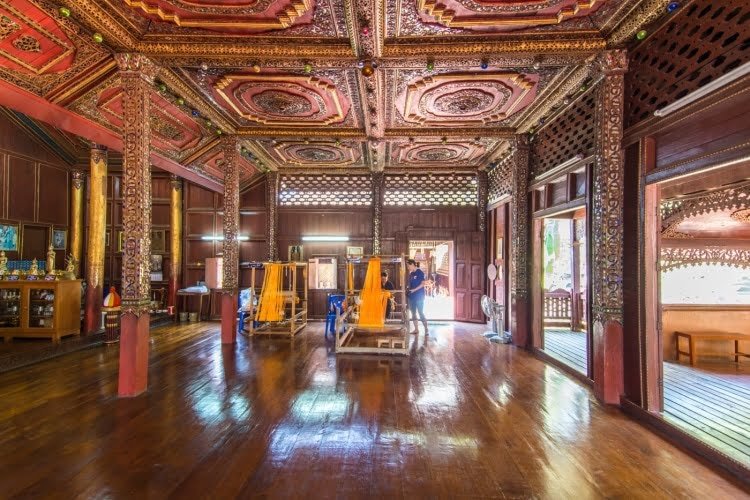
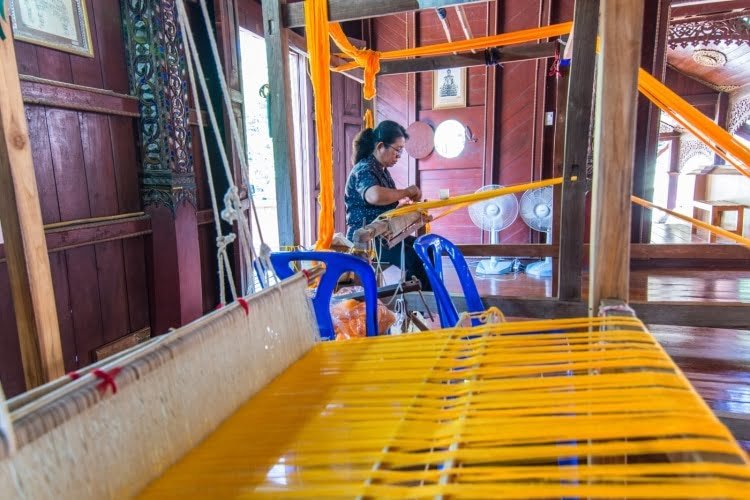
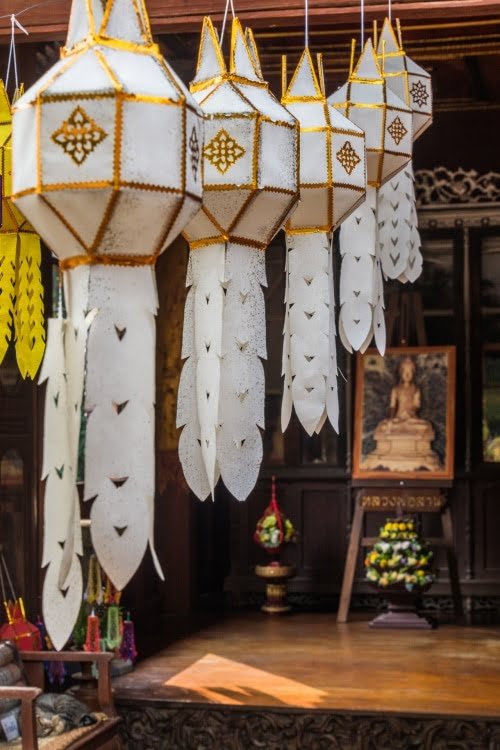
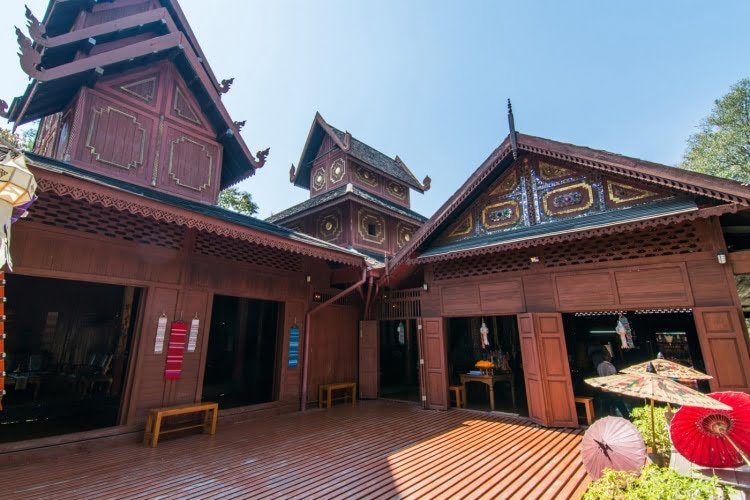
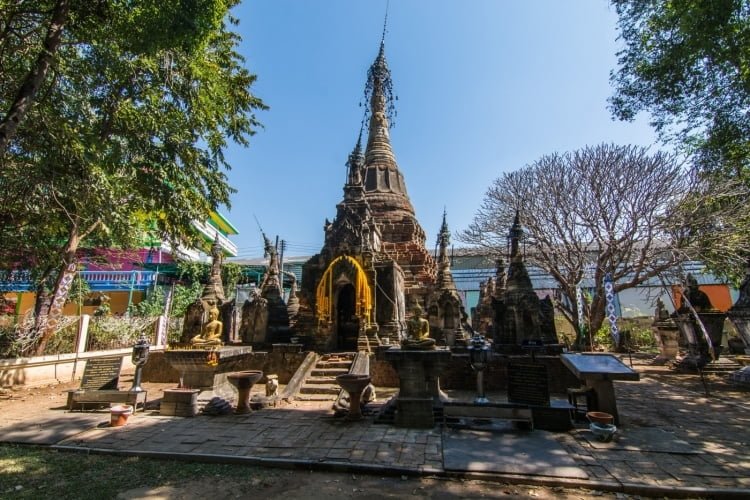
Wat Phra Non and the Saturday Night Market
It is not so much the temple itself that is worth the detour, even if it is a beautiful representative of the architecture and the finesse of the Lanna style. Literally, the name means "temple of the reclining Buddha" because, you guessed it, it houses a 9m statue in this position.
But if I mention it here, it is to evoke its market, which is associated with the temple. Indeed, this night market, which takes place on Saturday evenings only, is locally called "Kad Phra Non" in reference to the name of the temple, located along the street where the event takes place. The opportunity to soak up a local atmosphere off the beaten track.
Wat Phra That Cho Hae
Probably the most religiously important temple in the region, and it is also a temple of royal status, the What Phra That Cho Search is located east on a hill outside the city. Its chedi principal of 33 m The tall building dates back to 1337, although its current form is the result of successive extensions and renovations.
It is said to contain a hair of the Buddha as well as a piece of elbow bone. It was Phaya Lithai, king of Sukhothai who controlled the region at the time, who ordered the construction of the building to enshrine the sacred relic.
The chedi follows the so-called Chiang Saen style, namely a square base when the overall shape is octagonal. Next to it is the Viharn, a main building in the shape of a crescent and surrounded by a cloister under which we find the classic statues of Buddha.
Dance The building is enthroned with the main Buddha image, which seems very small compared to the height of the ceiling of the place, which is very colorful.
Wat Phra That Suthon Mongkhon Khiri
Le Wat Phra That Suthon Mongkhon Khiri is of recent construction since it dates back to 1977. It is intended as a memorial to the memory of soldiers who disappeared in combat (however, which soldiers from which combat, I don't know more).
This temple is located outside the city, closer to the town of Den Chai (where the Bangkok – Chiang Mai train passes), along the main road 101 connecting Phrae to Lampang.
We immediately notice the large statue of a reclining Buddha in the outer courtyard. Burmese in style, it appears very effeminate for some reason I don't know.
The temple itself is associated with a sort of small museum, located in a wooden house on stilts just at the entrance to the cloister surrounding theUbosot. Art objects, antiques, period photos and weapons are exhibited there.
Le What Phra That Suthon Mongkhon Khiri skillfully mixes Burmese styles like its large Buddha, its chedi main with multiple peaks and style Lanna, specific to the north of the Thailand.
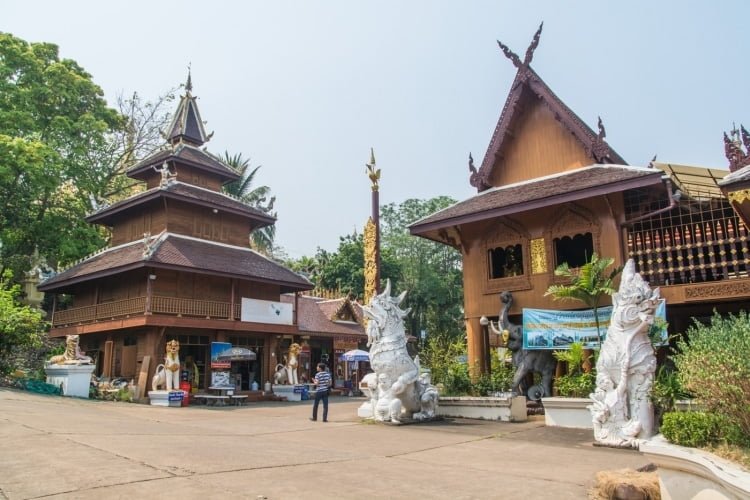

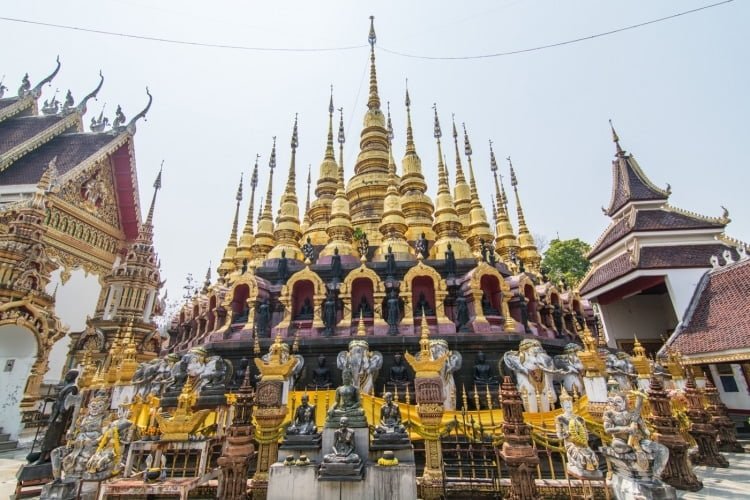
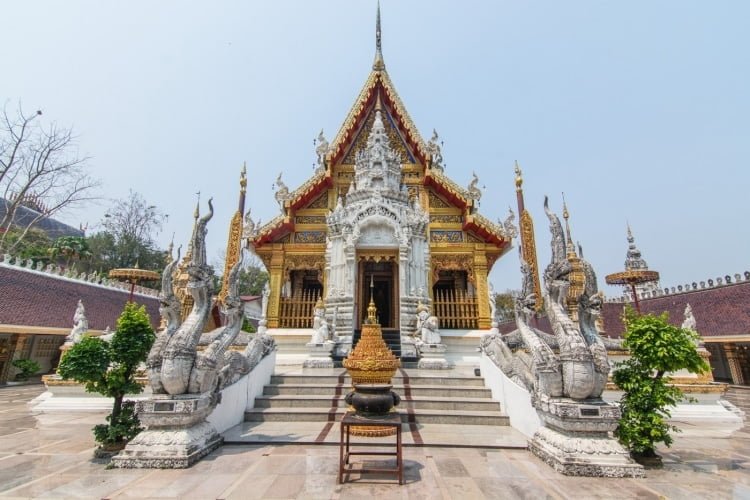
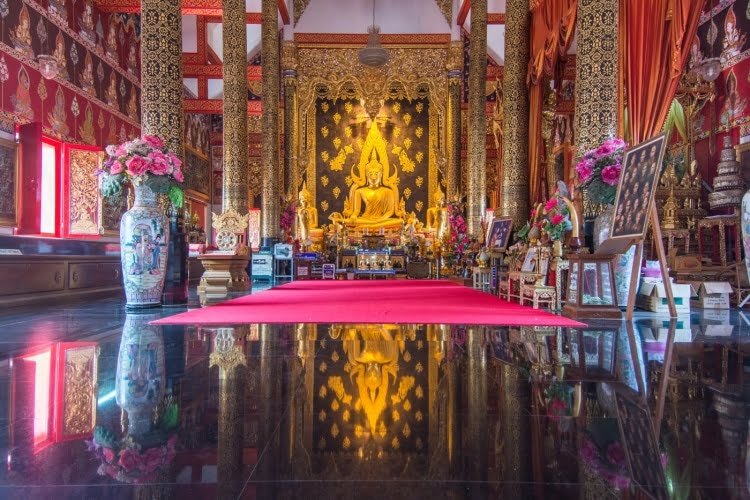
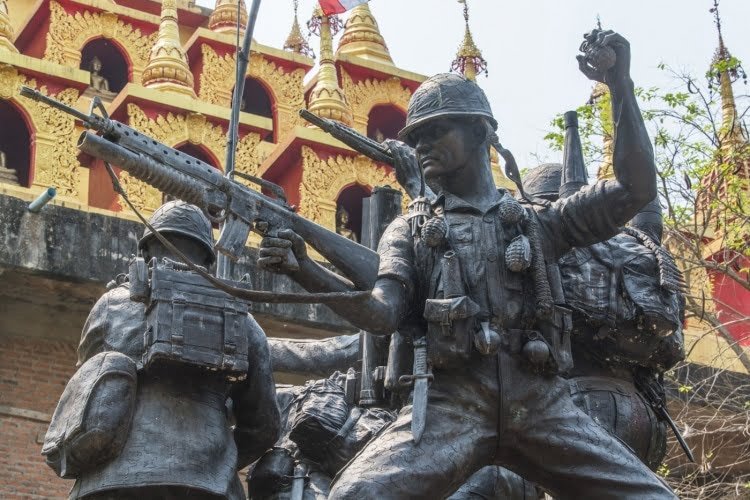
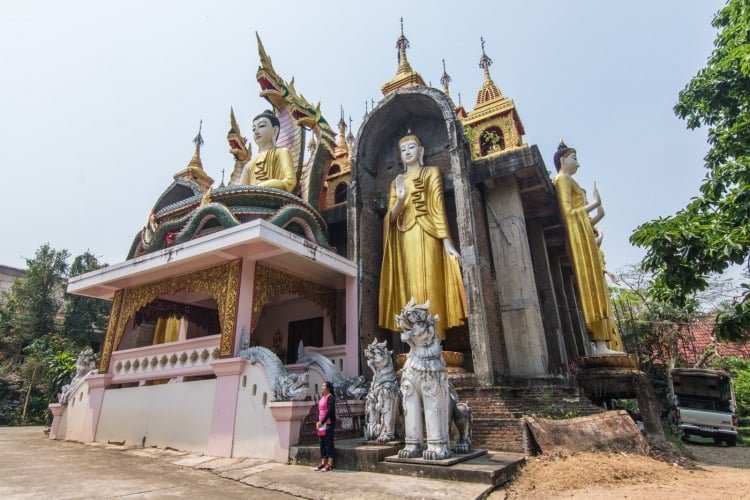
Phae Mueang Phi (geological site)
Also spelled Pae Muang Pee as in the name of the reserve where this site is located (Pae Muang Pee Forest Park, which covers an area of 0,27km²), is an area comprising rock outcrops formed by erosion over the millennia.
This gives columns and mushroom-shaped rocks, while several millennia ago, the Yom River, which today crosses the city of Phrae, passing through this mountain range de Phi Pan Nam.
Muaeng Phi, can be translated locally as “ghost town”, due to the slightly “otherworldly” appearance of these structures that have survived the centuries.
Located outside the city, 10 km from the center, it is the most famous attraction in the area. The area is easily explored on foot and is very concentrated. Without being exceptional, it is photogenic and the appearance of the whole is a bit particular, if only because of this dominant yellowish color which dominates the whole.
The good news is that it's free so why not. To get there, hire a songthaew (2-row pickup) from Phrae, it should cost you 400 Baht for this outing.
Ban Thung Hong: the indigo village
As such, nothing special to visit, but you will surely pass by it if you go to Mueang Phi from the center of Phrae. Ban Thung Hong is a village specializing in the manufacture of clothes made from Mo Ham, a local cotton fabric dyed indigo blue.
Located 4 km from the center along Route 101, you will see at one point a line of shops presenting their production, mixing traditional and modern outfits. It is possible to try your hand at dyeing a handkerchief, t-shirt or other by folding the fabric in a certain way and which will give the different patterns by unfolding it.
National parks and nature corner in Phrae
The region is obviously not free of national parks and other areas where to relax. The most important being the Wiang Kosai National Park. Located off Route 11, the main road to Lampang, it is a park visited for its waterfalls and dense forest covering the mountain which peaks at over 1200m.
On weekends and summer days (March/April), many Thais come to cool off and splash around at the main waterfall, Namtok Mae Kaeng Luang and its 7 levels.
And speaking of waterfalls, if you love nature, there is another one worth a look, Wow rong Waterfall. Located in the north of the province, around fifty kilometers from the center, the discreet waterfall (because little known to the general public) is away (4 km) from the main road 101 which goes up towards Nan. The waterfall is surrounded by forest and its appearance is reminiscent of the so-called "sticky" waterfall of Bua Thong. (north of Chiang Mai) because it is easy to go back up on foot, or at least understand that it is not slippery due to the nature of the limestone rock.
Finally, another national park, more secondary but also special, the Doi Pha Klong National Park, located along Route 1023, 20 km west of the provincial capital. The latter is special because its attraction is linked to these rock formations, but no "yellow mushrooms"
Pha Nang Khoi Cave
Little bonus in this list, a cave. Seen a bit by chance while I was hanging around the area before joining Chiang Rai. And what a nice surprise! Besides it was free (in any case, I haven't seen anything suggesting a paid entrance), the whole thing is nevertheless well maintained with a staircase built to go up to the cave, located on the side of a karst cliff.
The cave itself is very long and can be crossed until it comes out on the other side. The route is initially marked with explanatory signs, but these, in addition to being damaged, are only in Thai. This does not prevent us from appreciating the colored lighting which highlights the shapes, columns, stalactites and What. which can be seen during the walk through.
At the end of the cave found, as is often the case in caves, Thailand, an area dedicated to prayer. There you will find the inseparable statue of Buddha in the lotus position and something to put candles and incense on. On the side, a chasm sinks into the ground, I imagine the noises coming from it in the rainy season!
Next to the statue is find a staircase leading to the rear exit. A road passes by there, because there are fields in this area, it is by this last one that I decided to return to the parking lot in order to go around the area.
CIt's a pretty quick ride (a little hour), nice and few people on the day of my little exploration.
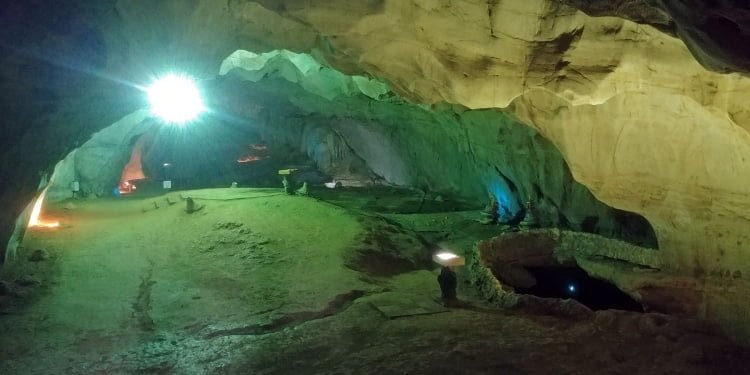
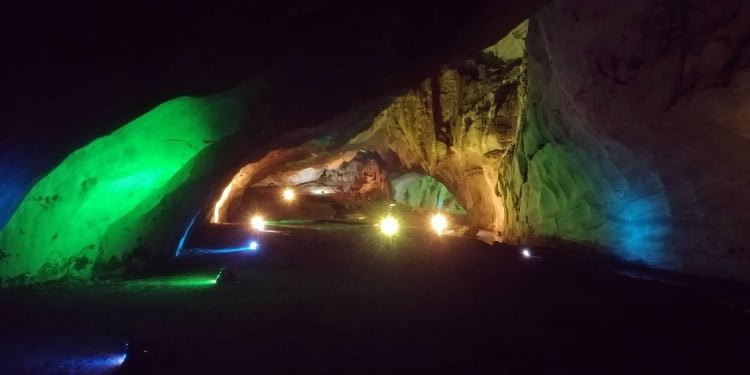
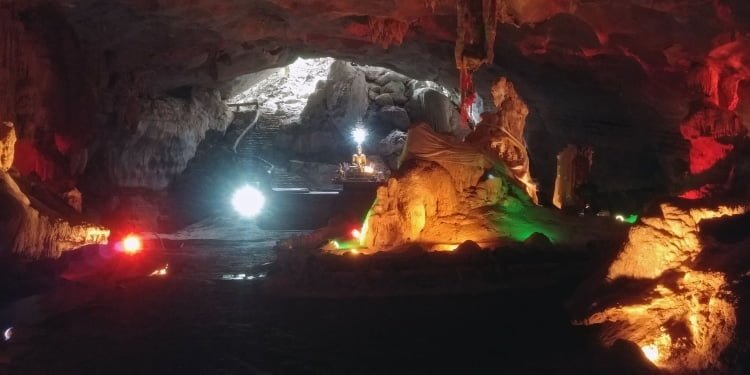
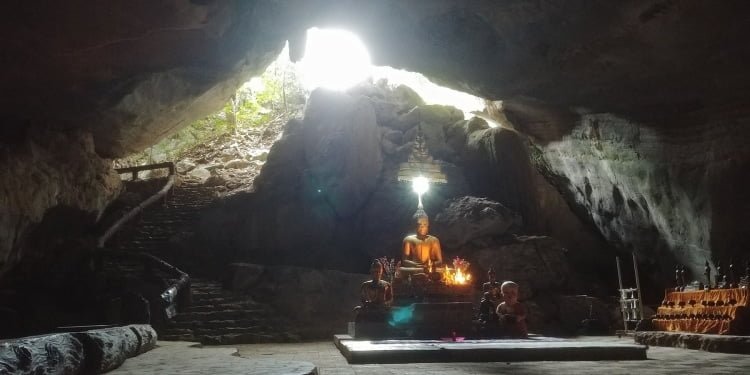
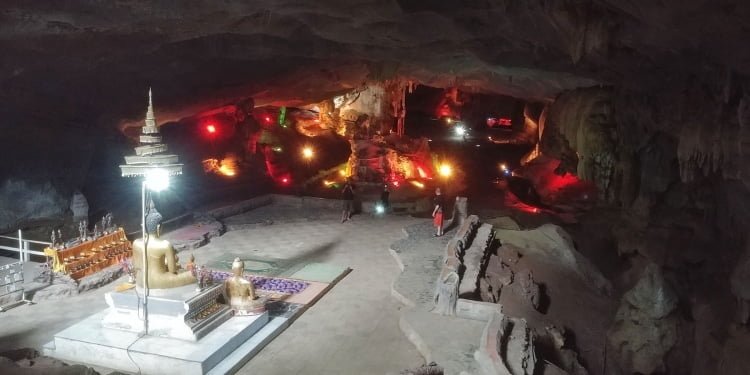
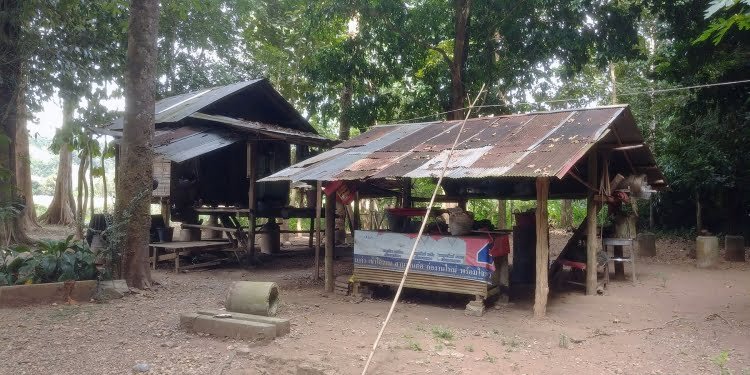
How to get to Phrae
Since I'm not going to go on too much here, I'll mention the 3 main destinations from where you are likely to arrive outside of Bangkok. For more details; I plan to make a dedicated page on how to come and leave Phrae (I will put the link once the said page existing and this, for all the important destinations mentioned on the site, yes, yes, there is work!).
Overall, note that Phrae has an airport, served daily by the local company Nok Air. If you are planning to come by train, be aware that there is no train station in Phrae itself, but the northern line connecting Bangkok to Chiang Mai passes through Den Chai, a town located 25 km south of the city.
From Sukhothai
If you have just visited the ruins of the Sukhothai Historical Park, you will logically have to go back through Phitsanulok, where all the transport in the region is concentrated.
Then you have the choice of taking the train to Den Chai and then Songthaew to Phrae city centre. You will also have the choice of buses and minivans that connect Phitsanulok to Phrae in less than 3 hours for 113 Baht.
From Chiang Rai
Buses also pass through Phayao from Chiang Rai for 147 Baht, normally taking less than 4 hours.
From Chiang Mai
To reach Phrae from the ancient capital of the Lanna kingdom, you will have regular departures, notably via the Greenbus company. Buses also go via Lampang, the journey should cost 174 Baht and take about 3 hours.
Where to sleep in Phrae
Before giving you the search tool, I present to you the hotels tested in the city and near Phrae.
Gingerbread House Gallery
The first hotel tested in the city itself is named after the particular style of wooden houses presented in this article, Gingerbread. And if it doesn't have the look, the Gingerbread House Gallery is still housed in a superb renovated and nicely decorated wooden house.
As a bonus, you will be treated to excellent organic food and a real café on the ground floor, the bedrooms being upstairs.
Baan I Inspire
Another hotel tested, in a modern style, the Baan I Inspire. One of the criteria being that I needed parking (which the Gingerbread doesn't have where I have to stick against the building right on the street).
The hotel is a bit out of the way so it's better to have a car (even to go eat). Otherwise for this price, it's pretty good, personally I had a room that was just huge! Breakfast ok but good overall value for money.
Hug Inn Phrae Hotel
The latest hotel tested to date is the Hug Inn Hotel. This one contrasts quite a bit with the provincial prison opposite it. Run by a young team, the hotel is modern. It is located not far from a few restaurants and an area with street vendors.
The breakfast is great and is taken in the small café attached to the hotel. It is perhaps the best in terms of location, and as a little bonus, it has parking.
Samnaree Garden House
Located near Den Chai (therefore outside the town of Phrae), the Samnaree Garden House is an option for those who would like a more "local" hotel. As the name suggests, this one is in the middle of a garden, owned by the family that runs the place.
It's pretty simple, but still comfortable and just right for a night in the countryside. This is a hotel that I sometimes used as a stopover for the night while I was traveling between S et Chiang Mai, the latter saves me from having to go back up to Phrae even.
Book a hotel in Phrae
If you don't find what you're looking for with the above suggestions, make your own choice by taking a look at the different options at Phrae via the search tool. Please note that any hotel reservation via the site earns me a commission, with no impact on you in terms of price, but which can help me continue to run this blog. Thanking you in advance and above all, good research !
My opinion on Phrae
Just like the neighboring provinces, I have named Phayao (which I have to explore myself so that I can talk about it later), and Nan, Phrae is a small province in northern Thailand that is largely ignored by foreign visitors, although it is increasingly popular among local tourists who pass through Phrae to join Nan or Chiang Rai.
The provincial capital has a mostly recent but not uninteresting history. It is a relaxed and friendly city (as is often the case in the north), with its charming old town and a large collection of Wats (temples), surrounded by picturesque landscapes, valleys filled with rice fields (in the right season) and hills covered with forests, in short, it can really be worth a visit.
Did you like the article? share on Pinterest!
